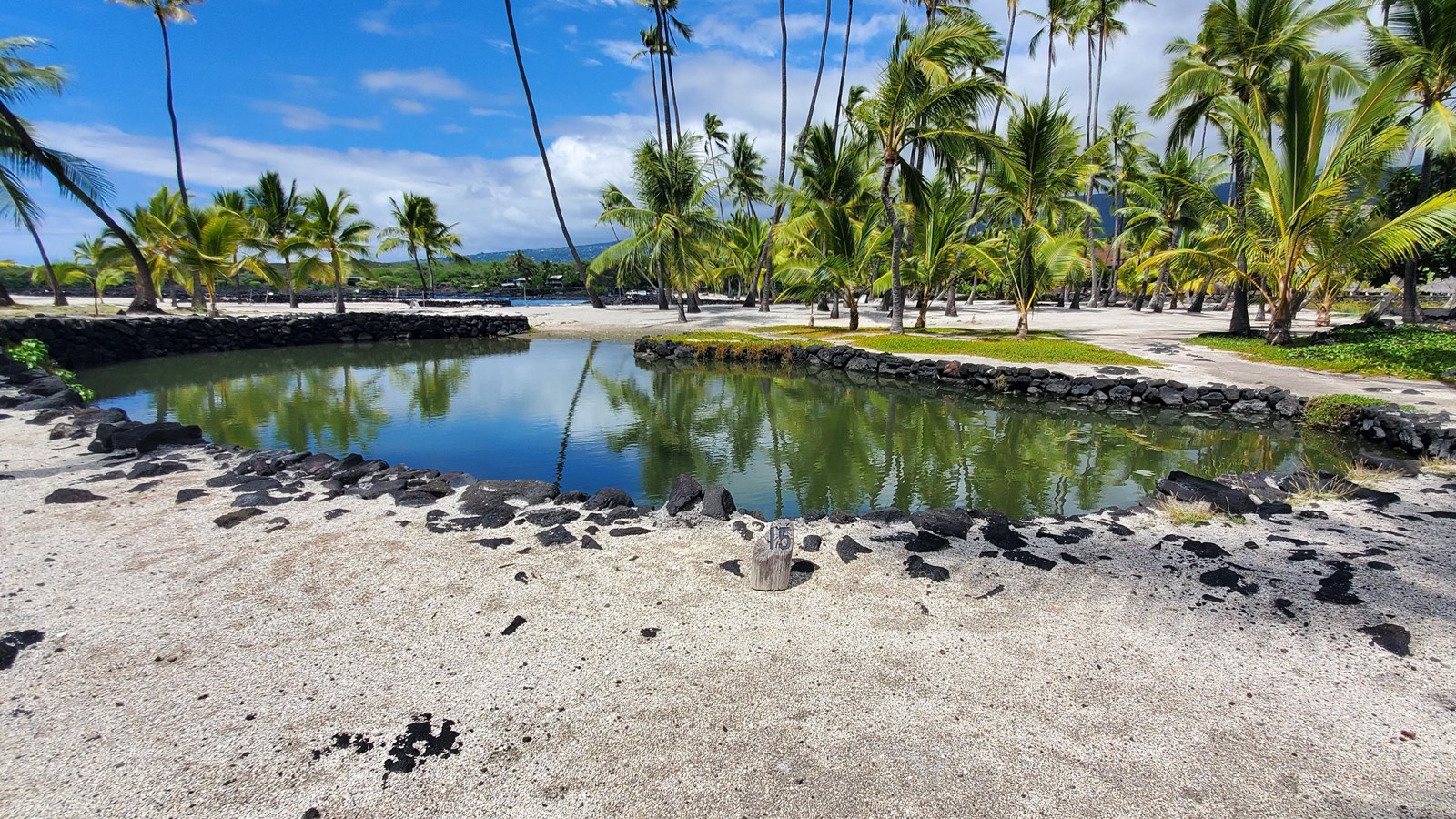Last updated: February 14, 2021
Place
#15 - Royal Fish Ponds

NPS
Audio Description, Historical/Interpretive Information/Exhibits, Scenic View/Photo Spot
These ponds, called Heleʻipalala, are a small example of lokoi’a or brackish water fishponds. Lokoi’a function as enclosed, nutrient rich habitats for the farming of live fish such as ʻamaʻama and ʻawa. But remember, as is the case for all things kept within the Royal Grounds, the fish from these ponds were strictly reserved for the aliʻi.
Unfortunatly, many of the fish populating Heleʻipalala today are invasive Tilapia—you may have noticed their circular nest structures. These fish were purposefully introduced decades ago for mosquito population control but are now considered an invasive species. Tilapia have a voracious appetite and easily out compete other species for food. These fish also create thick layers of sediment waste which is damagaing to partially enclosed ecosystems such as lokoiʻa. Their restoration is a priority for park scientists.
Our partners at Kaloko-Honokōhau National Historical Park outside of Kailua Kona maintain even larger, more impressive lokoiʻa along their shoreline. Places such as these are excellent examples of how traditional knowledge can offer insight into sustainable resource management.
